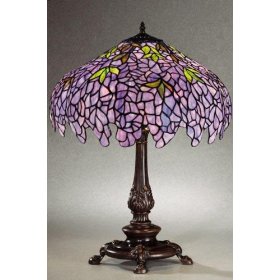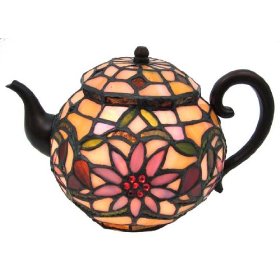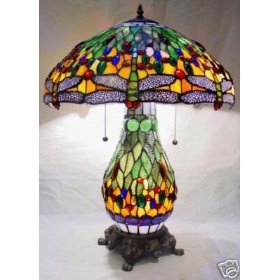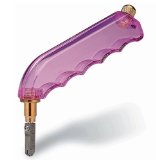However, there is one type that many people who work with stained glass prefer and it is called a pistol grip glass cutter.
A pistol grip glass cutter seems to give the most control when you are cutting the curves and patterns needed for most stained glass projects. But no matter what type you use, here are a few tips to get you started cutting glass quickly and easily.
You can cut glass either way: Either by pulling the cutter toward you or by pushing it away. The cutter doesn’t care, and you should start by using the method that comes easiest to you. As you become more skillful you’ll be able to either pull or push the cutter depending on which will make it easier to do the cut.
Do your first cuts from a standing position: When you are learning, it will probably be easier for you get the feel of glass cutting when doing it while standing. Once you become more practiced you’ll find that you can sit or stand as you prefer.
Hold the glass cutter with the wheel straight up and down: It’s important to remember and follow this rule. You need to keep the cutting wheel straight while following your line and maintain even pressure at all times.
Find a way to hold the cutter comfortably: There is no hard or fast rule about how you should hold a stained glass cutter. And that is why many prefer a pistol grip glass cutter since it is made to fit in your hand comfortably.
Learn the sound that glass makes by doing straight practice cuts on window glass: This is a good way to practice. As you make your cut you’ll hear the cutter make a ‘sizzling’ or crisp ‘crunching/crackling’ sound that indicates it is making the score. You don’t have to press real hard, just firmly. And of course the glass cutter doesn’t ‘cut’ all the way through the glass, it just makes a ‘score line’ on the glass that allows it to break along this line cleanly after you finish using the stained glass cutter.
Run off the edge if possible when you finish your cut: This is the side where you will break the glass from since you know the score line has gone all the way to the edge.
Safety first: Always use eye protection when you are cutting glass and wear gloves and other necessary safety equipment as needed. You don’t want to find out what a little super sharp piece of glass in your eye feels like or experience the damage it can do.
If you start out on your hobby by getting one of the many stained glass kits that comes with a cutter you may want to consider a kit that includes a pistol grip glass cutter. Or if you buy your stained glass tools separately you can then decide to try a cutter of this type.
And no matter which type of cutter you use you will find that cutting stained glass is an easy skill to learn. Do a little experimenting on inexpensive clear window glass first to get the feel of things, and you’ll be making Tiffany style stained glass lamps in no time.





